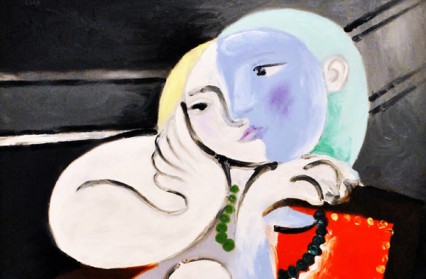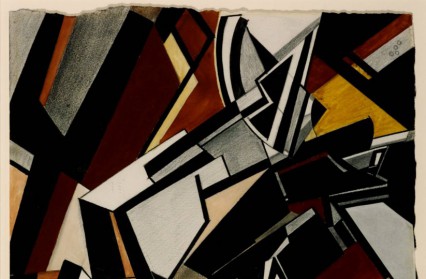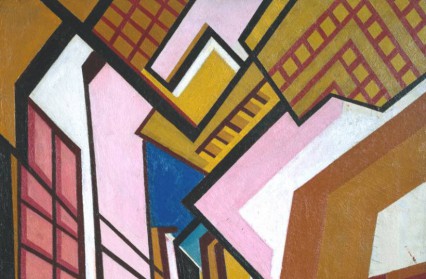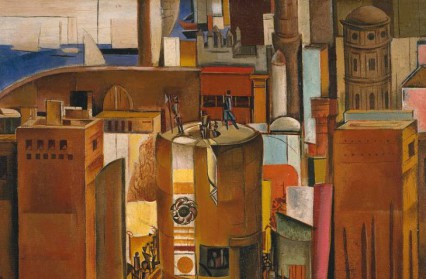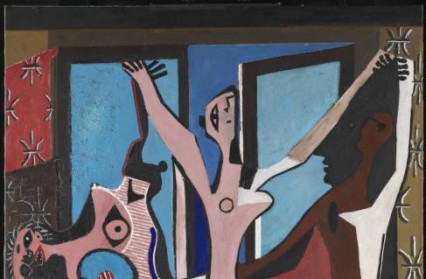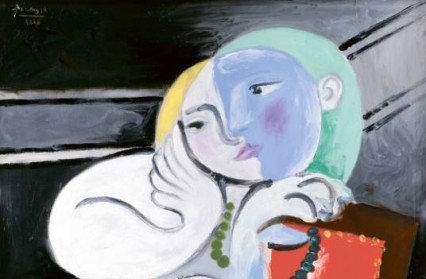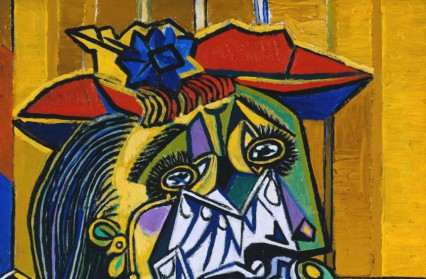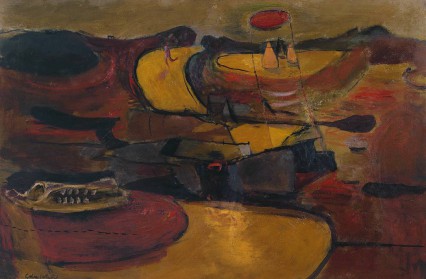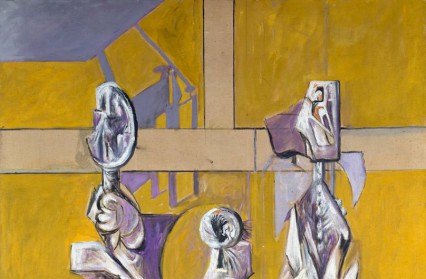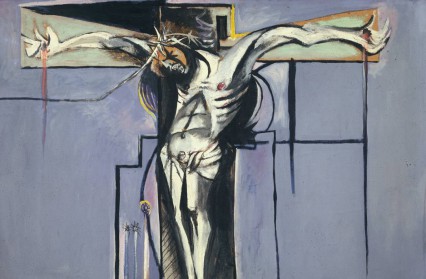For those seeking to examine the impact of Picasso on the Welsh art of the day two threads are directly offered, through the work of Wyndham Lewis, his tutor Augustus John, and Graham Sutherland, an English-born painter who sought inspiration from the Pembrokeshire landscape. Picasso and Modern British Art is a show that shines the spotlight of scrutiny on works by some of the greatest British painters of the 20th Century modern art scene to examine the impact and depth of Picasso on their work, and by association that of their peers.
Graham Sutherland was directly influenced by Picasso’s work, as quoted by the accompanying narrative Sutherland acknowledged his debt to Guernica, from which he learned that ‘by a kind of paraphrasing of appearances things could be made to look more vital and real’. The selected Sutherland works within this show certainly reinforce this view. From Sutherland the ripple effect-like indirect reference to Picasso can then be considered, for example the work of Elvet Thomas, a Welsh artist, and though not referenced in this show, whom Graham Sutherland at the Slade School tutored and whose resulting works do bear the hallmarks of Picasso.
The influence of Picasso today is unmistakable and easily accessible via an assortment of online and offline mediums. You don’t have to travel far to take in any of Picasso’s works. However, it is well known that this was very different to the Wales of the early 20th century. Art in Wales: An Illustrated History 1850 -1980, by Eric Rowan, provides an excellent account of this period in Welsh art; during this time, art in Wales was largely isolated from the travelling works and European influences that largely touched on London or those fortunate enough to travel further abroad to seek inspiration from the latest artistic movement.
This was not helped by the economic circumstances of the time, an undeveloped higher education arts system and the absence of a national museum of modern art. The early 20th century did see the creation of Wales’s own Royal Academy, a grand effort that eventually receded from Cardiff to Conwy where, though smaller in scale, it continues to flourish to this day. In the face of these obstacles the resilience of the Welsh art scene compensated by drawing upon its inner influences, creating its own art movements and communities, whilst Wales’s shores have attracted a number of artists, enveloping there names as part of Welsh artistic heritage, Sutherland included. All these things helped nurture Welsh art to prosper into the outward looking Welsh art scene of today.
This show offers a candid and direct assessment of the influence of some of Britain’s best-known painters. However, you could also consider where Welsh art would be today had Picasso’s work pervaded deeper into Wales during the early 20th century. Speculation.


